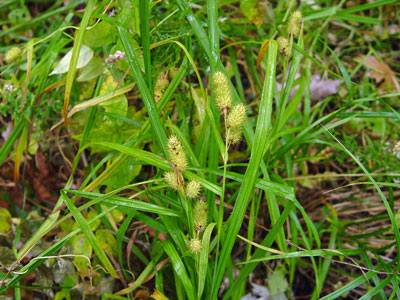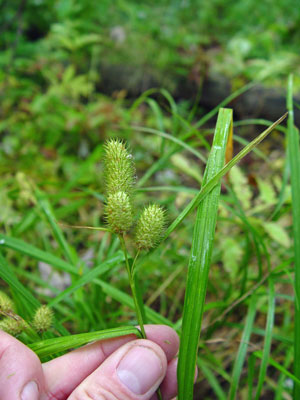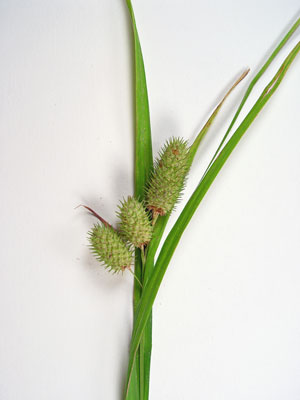DACF Home → Bureaus & Programs → Maine Natural Areas Program → Communities, Plants, and Animals → Rare Plants → Carex typhina

Carex typhina Michx.
Cattail Sedge
- State Rank: S1
- Global Rank: G5
- State Status: Endangered
Habitat: Calcareous meadows and wooded bottomlands. [Forested wetland; Open wetland, not coastal nor rivershore (non-forested, wetland)]
Range: Central Maine and southwest Quebec to Wisconsin, south to Georgia, and west to Louisiana.

Aids to Identification: Identification of species of the genus Carex is usually difficult and dependent upon rather technical characters. Carex typhina is in the section Squarrosae, a group recognized by its inflated perigynia with an abruptly tapered bi-dentate beak. Carex typhina has long, arching culms that generally overtop the dense, cylindric inflorescences. The achenes are trigonous with a straight style. It is the only member of its section in Maine.
Ecological characteristics: The lone population in Maine is found in a silver maple floodplain forest where plants are inundated annually in the spring. Other members of the genus frequently found growing with C. typhina include C. lurida, C. lupulina, and C. intumescens, as well as with Onoclea sensibilis and Lyonia ligustrina in the understory. Apparently not rare in the southern portion of its range.
Phenology: Fruits July - August.

Family: Cyperaceae
Synonyms: Carex squarrosa L. var. typhina (Michx.) Nutt.
Known Distribution in Maine: This rare plant has been documented from a total of 2 town(s) in the following county(ies): Androscoggin, Kennebec.
Reason(s) for rarity: At northeastern limit of range; calcareous habitat is naturally scarce.
Conservation considerations: Maintain hydrolgy of floodplain forest.